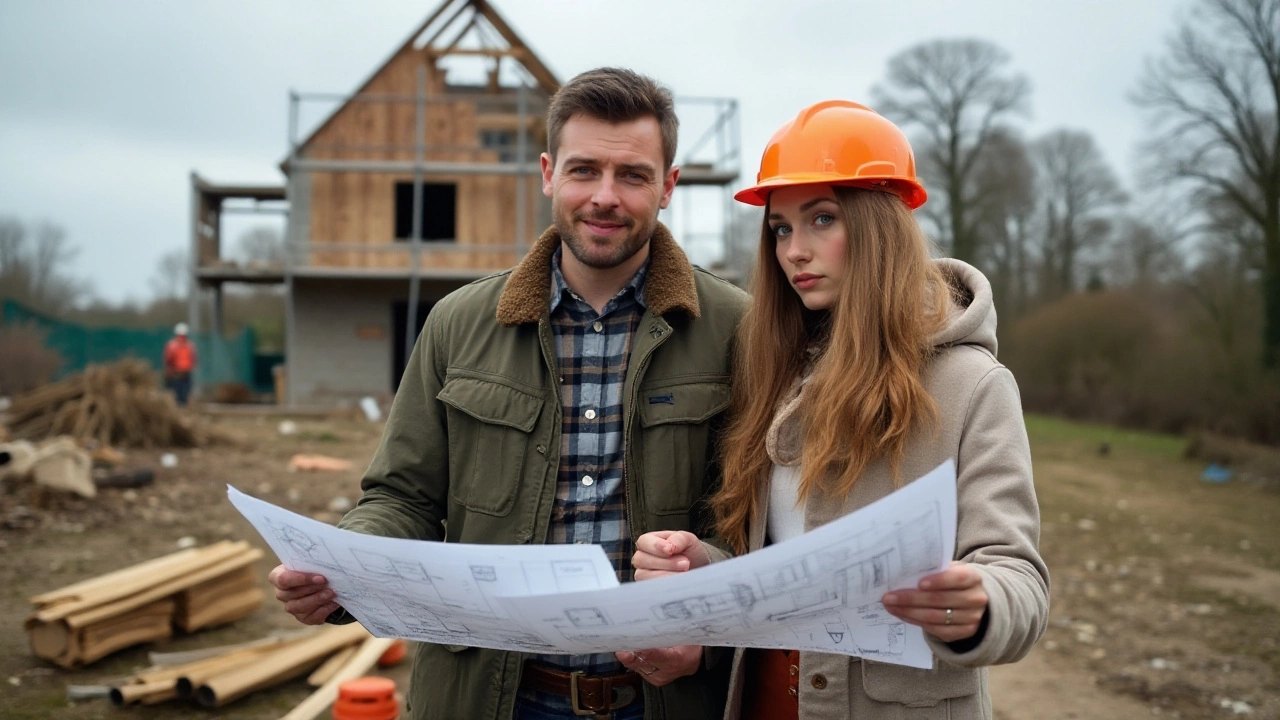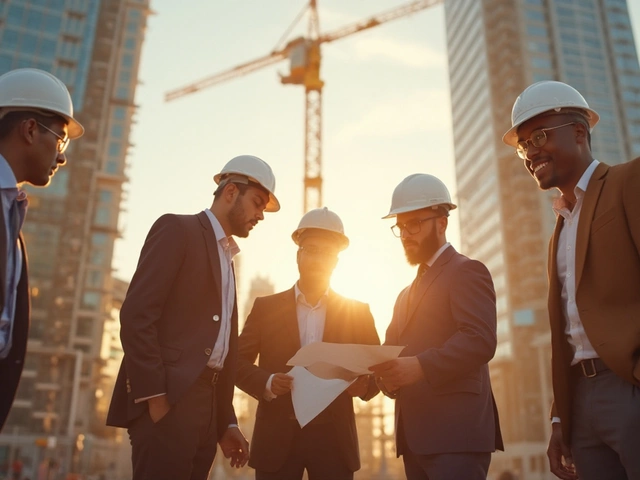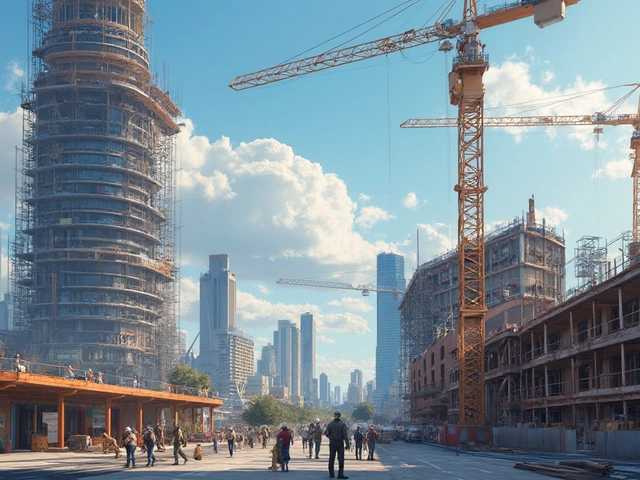Building a house from scratch is a dream for many, offering the chance to create a tailor-made home. However, the process is far from a walk in the park. With that perfect vision comes a series of challenges that can test the most patient of souls. Before diving in headfirst, it's crucial to understand the potential pitfalls.
Embarking on this journey often means walking a tightrope between budget constraints and skyrocketing ambitions. Unforeseen costs can turn the financial aspect into a deep concern. Moreover, nothing happens overnight; constructing a house is inherently a time-consuming endeavor that demands patience and meticulous planning.
For anyone considering this quest, an awareness of potential stress and decision fatigue is important. Multiply that stress with the environmental concerns that some may overlook, and it becomes clear why thorough preparation is key. Not to mention the risk of delays, which can create a ripple effect, affecting everything from timelines to budget. Preparing for these realities can make the process a little smoother, and the end results all the more rewarding.
- Financial Strain and Budget Overruns
- Time Consuming Process
- Stress and Decision Fatigue
- Hidden Environmental Impact
- Potential for Unexpected Delays
Financial Strain and Budget Overruns
Building a house can usher in unforeseen financial challenges that are often underestimated. The initial estimates might look manageable, but the reality is that constructing a new home has a way of creeping beyond the budget in unexpected ways. One of the most significant impacts is the cost of materials, which can fluctuate wildly due to market changes. For instance, lumber prices surged over the past few years, a trend many did not anticipate. This volatility can add thousands to the original budget, leaving homeowners scrambling for solutions mid-project.
In addition to fluctuating material costs, hidden fees often lurk in the shadows. Permits and inspections, for example, are sometimes not included in the original quote, yet they are mandatory requirements that cannot be bypassed. These bureaucratic necessities might not seem daunting individually, but together they can pose a significant financial burden. Regular reviews of the budget and clear communication with contractors can help manage and possibly pre-empt some of these costs. A contingency fund, typically recommended at 10-20% of the original budget, should also be in place to account for the unpredictable nature of construction costs.
"An unexpected cost here and there can quickly snowball," says architect Jane Smith, "which is why a flexible budget is just as crucial as the blueprint itself."
Additionally, labor shortages globally have contributed to higher costs, as skilled workers become more sought after. This scarcity often means paying a premium for reliable workmanship, another aspect that chips away at the bottom line. Without a doubt, building a new home requires balancing this delicate financial act. Including a pre-planned strategy for potential delays and price hikes not only saves money but also sanity. Informing oneself about these factors can turn a stressful situation into one that is more manageable. By foreseeing these potential hurdles, homeowners can enjoy not just the end result, but the process as well.
| Expense Type | Percentage of Total Budget |
|---|---|
| Materials | 35% |
| Labor | 25% |
| Permits & Inspections | 10% |
| Contingency Fund | 15% |
| Miscellaneous | 15% |
It's worth noting that constructing a home in unpredictable economic times adds another layer of financial strain. Interest rates on construction loans can affect the total cost dramatically. Keeping abreast of financial trends is not standard practice for everyone, yet doing so is incredibly beneficial for future homeowners. Acknowledging these financial strains upfront, and planning with them in mind, makes the project not just a construction of a physical space, but a robust journey of problem-solving and adaptation.
Time Consuming Process
The journey of building a home extends far beyond the initial planning and dreaming phases. It's a time-consuming process that demands more than just imagination and dedication. Anyone who has embarked on this journey will tell you that patience is more than just a virtue; it's a necessity. From the moment the first blueprint is drawn up until the last coat of paint dries on the walls, the timeline is often much longer than expected. Delays can stem from countless corners — securing proper permits, unpredictable weather impacting construction schedules, or disputes with contractors, each can extend the build times significantly.
Contractors often caution against the pitfalls of underestimating the time required, as many hopeful homeowners do. It’s not uncommon for these projects to exceed a year, with some extending even further. This lengthy timeline can create disruptions in personal lives, with families needing temporary accommodations or juggling rental agreements. In essence, building a home becomes a central theme in one's life, demanding attention and time that might've been allotted elsewhere. According to the National Association of Home Builders, an average of seven months is required to complete a single-family home, but countless variables can add months to this period.
Adding to the complexity, the coordination required among various trades, from electricians to plumbers, involves meticulous scheduling and constant vigilance. When even a minor delay occurs, such as with materials arriving late or an unexpected discovery like a utility line on the build site, it can cascade into adding weeks or months to the overall project timeline. An element many fail to anticipate is the decision-making fatigue that comes along. Hundreds of decisions must be made at different stages, each requiring time, research, and careful thought. As pointed out by architect Sarah Susanka, "You live in the minutiae. It's not about large decisions; it's about how those details add up to something you love or loathe." The truth of her words resonates with many who have walked this path.
To manage this lengthy and convoluted process, creating a detailed schedule and sticking to it when possible is essential. However, flexibility and resilience are just as critical. Being attached to the initial timeline can lead to frustration and disappointment. Instead, being prepared to pivot and adjust plans can make the difference in making this journey not just bearable but enjoyable. Communication remains the cornerstone; regularly discussing progress and hiccups with everyone involved ensures alignment and a collective understanding of the shifting timelines.
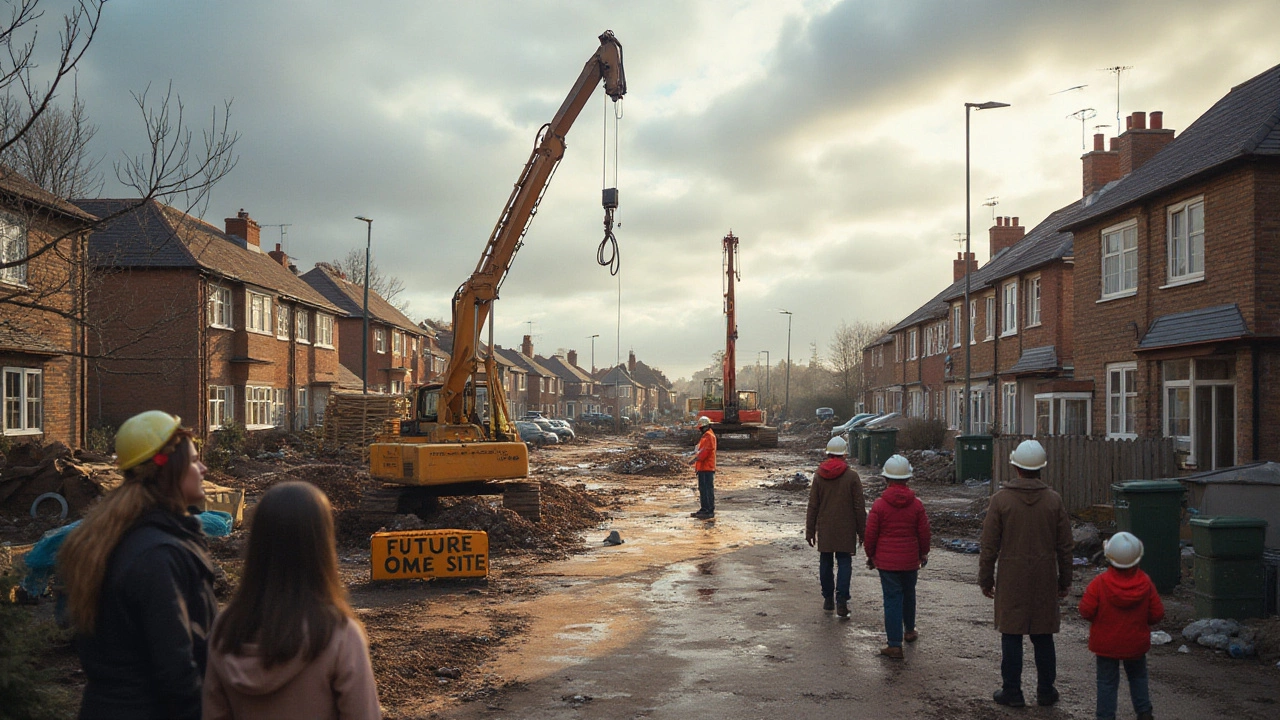
Stress and Decision Fatigue
Constructing a new home can certainly be a thrilling adventure, but it is one fraught with myriad decisions that can lead to significant decision fatigue. Every aspiring homeowner embarking on the journey to build a new house faces a seemingly endless series of choices, from the layout and design all the way to the types of fixtures used in the bathrooms. This constant need to make decisions can lead to a feeling of exhaustion, where one might find it increasingly difficult to make informed choices. In fact, studies have found that the brain's capacity for decision-making can be compromised after too many decisions, a phenomenon recognized by psychology as decision fatigue.
The stress associated with building a home is not just a result of the decisions themselves, but also the pressure to make the ‘right’ choice at every turn. It’s often noted that homeowners need to strike a delicate balance between their desires, practicality, and budget constraints. A survey by the National Association of Home Builders highlighted that more than 60% of new home builders experienced heightened levels of stress during the process, which was primarily linked to ongoing decision-making needs. Much of this stress arises from fear of making mistakes that could lead to financial repercussions, or from the strain of dealing with contractors or architects who may have their own agendas.
As decision fatigue sets in, the ability to prioritize and assess the relative importance of different decisions may diminish. This can lead homeowners to either procrastinate on essential decisions or make hurried choices that they might later regret. During the house-building process, it's not uncommon for individuals to revert to ‘default’ decisions, which may not be the best options, simply because they are too tired to think of alternatives. An interview with Dr. Kathleen Vohs, a prominent researcher in decision-making, reinforced the importance of finding strategies to minimize decision fatigue. She suggested breaking down decisions into manageable pieces and giving oneself ample time to reflect on significant choices.
“The key to managing decision fatigue is recognizing our limits and giving ourselves grace when navigating complex processes,” says Dr. Vohs, explaining that acknowledging our cognitive limitations allows us to plan better around them.
One of the practical strategies to combat this decision fatigue during a home build is to set clear priorities right from the beginning. Creating a vision board with clear end goals can help maintain focus and act as a reminder of what truly matters. Another effective approach is delegating decisions, either by choosing a point person with expertise, like an interior designer, or by consulting with trusted friends or family. Homeowners are encouraged to take breaks and step back when it feels like the decisions are becoming overwhelming. After all, stepping away can often provide the clarity needed to tackle the decisions with renewed energy.
Stress management techniques can also play a critical role in addressing the mental load of building a house. Practicing mindfulness or engaging in physical activities like jogging or yoga can greatly alleviate stress. A study published in the Journal of Health Psychology found that individuals who practiced mindfulness regularly reported lower levels of stress and better decision-making capabilities. Taking this time for self-care can unlock the creative thinking needed to solve tough building challenges and ensure that the process is as enjoyable as the final result.
Hidden Environmental Impact
The idea of creating a brand new home is enchanting; however, it's crucial to look past the outer structure and think about the environmental footprint. Constructing a home from the ground up involves using a variety of materials that can contribute to environmental degradation. For instance, the production and transportation of steel, concrete, and other materials required for a new build are energy-intensive and often result in significant carbon emissions. This means that every time a ton of concrete is produced, nearly equal amounts of CO2 are released into the atmosphere.
One must also consider the land itself before construction begins. The act of clearing trees and other vegetation to make way for a building site disrupts ecosystems and contributes to habitat loss. The removal of natural landscape not only affects flora and fauna but can also lead to soil erosion, altering local watersheds. Such changes may have long-lasting effects that ripple through the environment, impacting biodiversity and even local climate patterns.
Chris Magee, an environmental researcher, said, "Building sustainably is not just a choice; it's an imperative. Every new structure imposes a lasting impact on our natural resources."
Then, there is the issue of water usage—a factor often forgotten. During the construction stage, significant volumes of water are required, from mixing concrete to dust suppression. Consistently tapping into local water resources can exert pressure on the community's supply, particularly in drought-prone areas. Reusing greywater or capturing rainwater as alternatives can help mitigate this impact, though these solutions are not yet standard practice across all builds.
Creating an energy-efficient home typically involves using modern technologies like solar panels or green roofs. Yet, ironically, the initial production of these technologies can also pose environmental challenges. The extraction of raw materials like lithium for solar batteries, for instance, is often criticized for its own ecological damage. It's a reminder that striving for sustainability involves thoughtful assessment of construction drawbacks at every stage.
Evaluating Long-Term Impact
A new home's ongoing operation can also strain natural resources. While modern homes may be more energy-efficient than older ones, they often have larger footprints, requiring more energy for heating, cooling, and lighting. Homeowners can reduce this by selecting energy-efficient appliances and implementing smart home tech to decrease consumption. Another often-overlooked factor is waste management, as construction processes generate massive amounts of debris which may end up in landfills.
In order to frame the broader picture, it's helpful to visualize the resource consumption across different building techniques. A table illustrating the carbon emissions associated with traditional versus sustainable building methods could provide valuable insights into choices that minimize environmental damage. Adopting greener materials and methods can somewhat alleviate the hidden environmental impact, but it remains a complex balance that prospective homeowners should weigh thoughtfully.
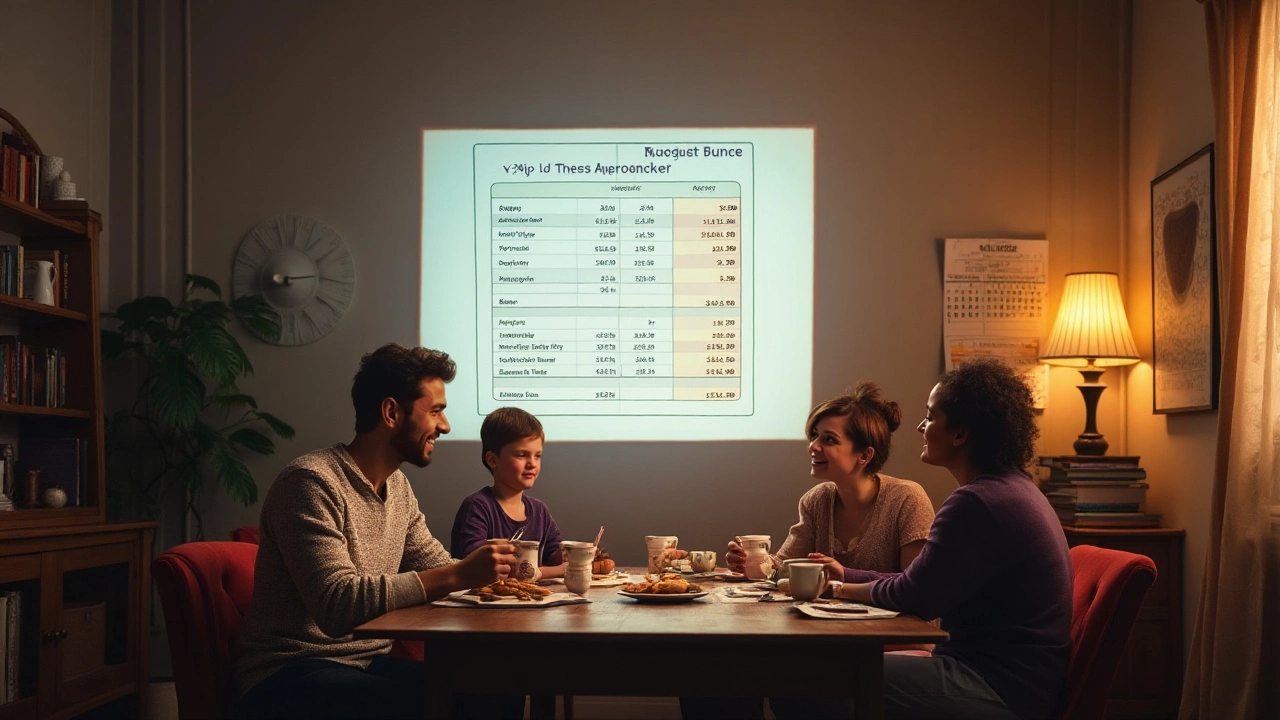
Potential for Unexpected Delays
Embarking on the journey of constructing a home often begins with enthusiasm and meticulous scheduling. Nevertheless, the reality is that home construction doesn't always progress as smoothly as planned. One common issue encountered during this process is the potential for unexpected delays. These delays can sprinkle little challenges across the timeline, manifesting from various sources including weather conditions, supply chain disruptions, or labor shortages.
One significant cause of delays is adverse weather. Construction activities are particularly sensitive to weather conditions such as rain or extreme temperatures, which can halt work for days or even weeks. This can have a domino effect on the entire project. Furthermore, the supply chain can be another source of unpredictability. With global events affecting production and transportation, materials may not arrive on schedule, stalling progress and increasing costs.
The Role of Communication Breakdown
Communication breakdowns represent another potential source of delays in the home building process. Miscommunications between contractors, suppliers, and homeowners can lead to misunderstandings that could pause construction activities. Effective communication is essential to ensure that everyone involved is on the same page, reducing the likelihood of costly errors. It's often said that "clear communication averts complications," highlighting the power of proactive engagement and articulation.Labor shortages contribute significantly to hiccups in the construction timeline. Skilled labor is a precious commodity in the construction industry, and finding the right people for the job can be challenging. This can often mean waiting for availability, thus extending your build time well beyond what was initially expected. One report stated that in the U.S. alone, the construction industry needs over half a million more workers to meet current demands.
Mitigating Delay Risks
While delays may seem inevitable, there are steps you can take to mitigate risks. Building in contingencies by including buffer periods in your project timeline can help absorb some of these delays without derailing the entire schedule. Opting for local suppliers where possible can also alleviate some supply chain uncertainties, providing flexibility to recover from setbacks.Using advanced project management tools can enhance transparency and efficiency across the board, minimizing lag caused by mismanagement. Having a seasoned project manager can also play an instrumental role. As Joe Smith, a well-regarded project manager, points out,
"A capable project manager not only anticipates delays but also efficiently orchestrates the project by utilizing a well-cushioned roadmap."His insights accentuate the importance of having experienced eyes on the project, seamlessly managing impending risks.
Ultimately, avoiding unexpected delays in constructing a new house is about preparedness and agility. By preemptively addressing the variables that contribute to delays, homeowners are better positioned to steer their projects toward timely completion. Stakeholders often find that their adaptive capacity, combined with effective communication and strategic planning, can significantly reduce the impact of unforeseen setbacks.

